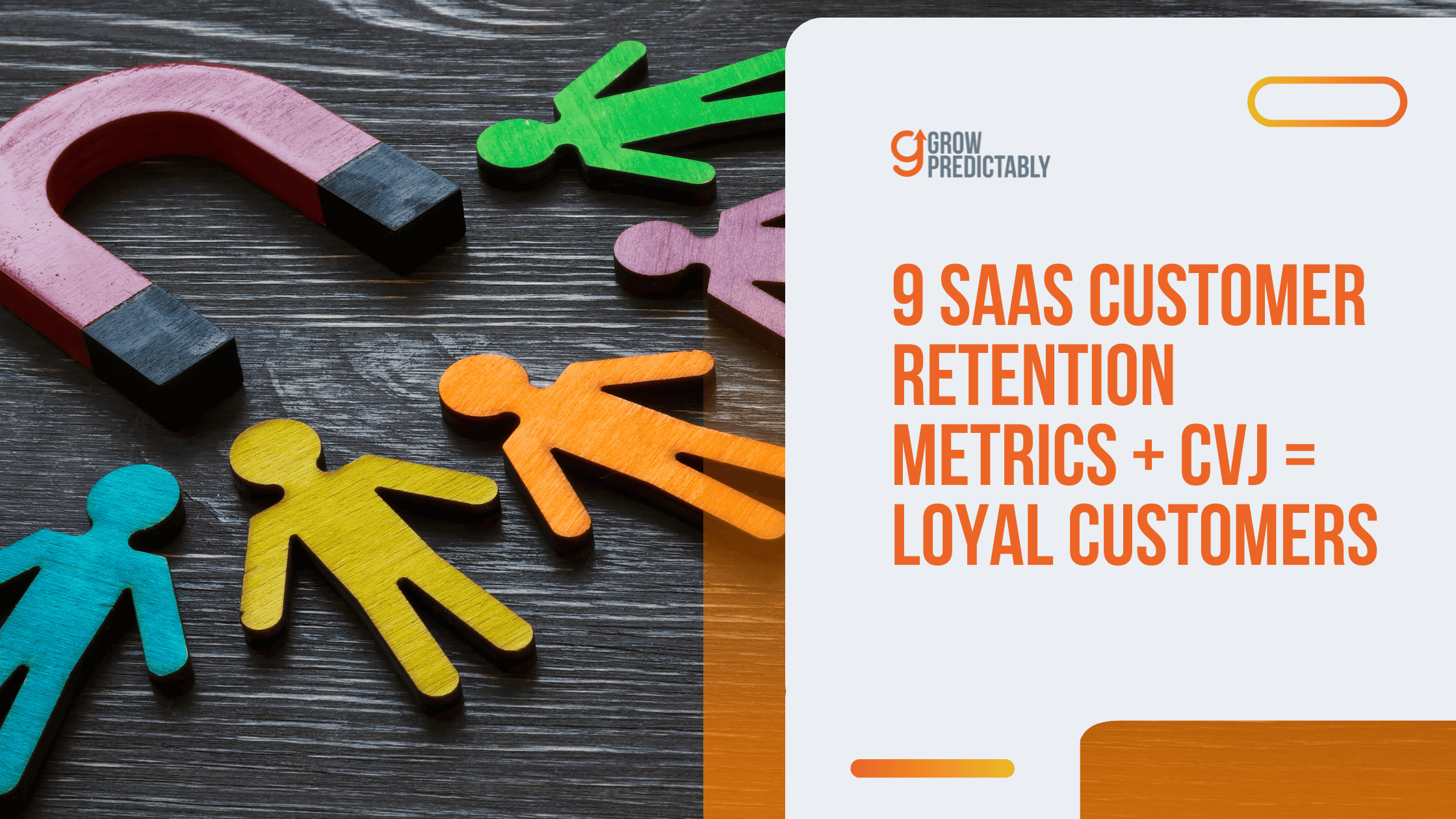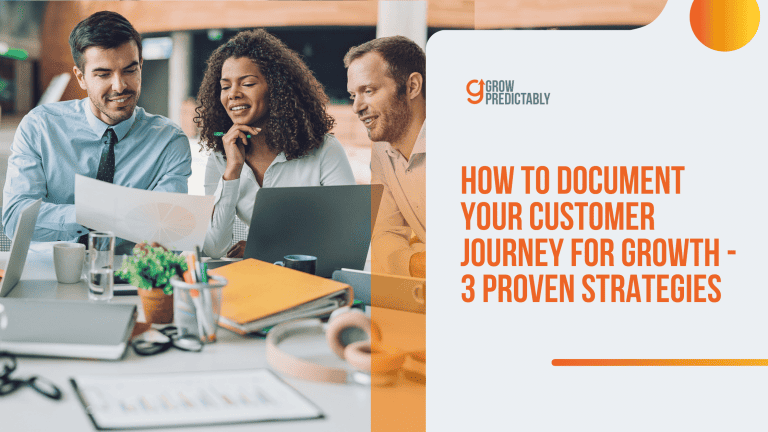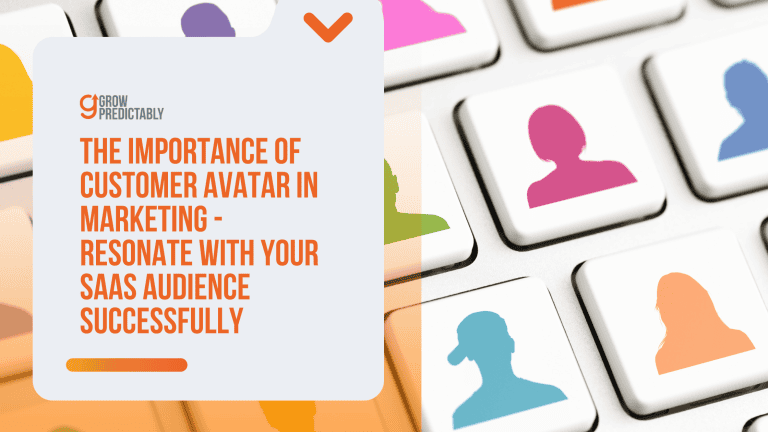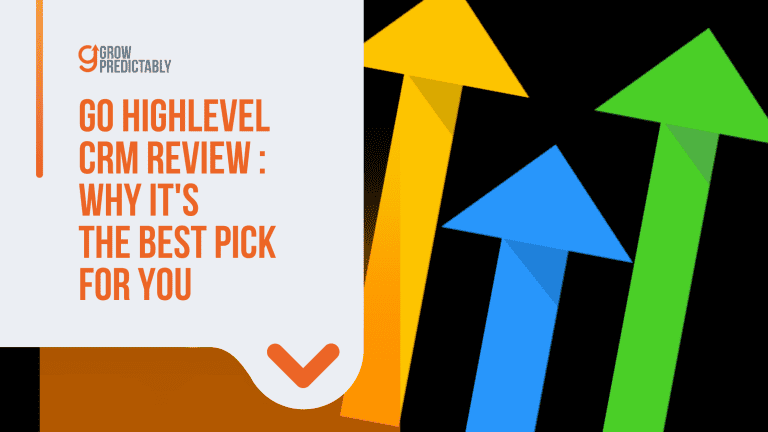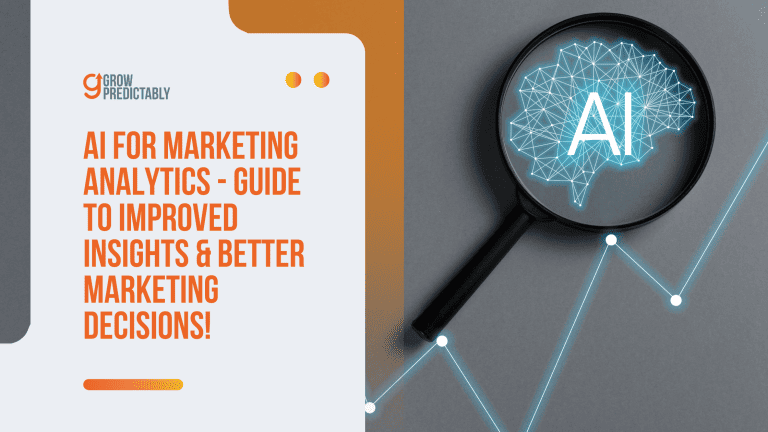9 SaaS Customer Retention Metrics + CVJ = Loyal Customers
Is your SaaS product drawing in new users but only to lose some of them over time?
Do you want to find a way around keeping those customers subscribed to your SaaS business?
Are you struggling to create customer loyalty with your SaaS solutions?
What’s really important is nailing those SaaS customer retention metrics.
In fact, repeat customer statistics reveal that returning loyal customers spend an average of 33% more per order compared to new customers. (Source)
This indicates the value of nurturing and retaining your SaaS customers.
So, today, we’re diving into the nine important retention metrics that you’ll need to take note of, plus a unique way of looking at how you can give value to your SaaS customers to help diminish churn and gain their loyalty.
Wrapping your head around these will not just save your bottom line; it’ll skyrocket.
If you’re ready to make SaaS customers stick like glue, let’s begin by answering an important question.
How does customer retention differ from customer acquisition?
Which Costs More: Customer Acquisition or Customer Retention?
If you answered the former, you’re correct!
Yes, focusing on customer acquisition can help you consistently grow your number of clients.
However, while doubling down on customer acquisition increases your customers, customer retention efforts will allow you to make as much use of the value of the SaaS customers that are already buying from you.
Below are data that show how customer acquisition is more expensive than retaining customers that your business already has:
- 5-7x More Costly: Depending on the industry, acquiring a new customer can cost five to seven times more than retaining an existing one. (Forbes)
- 5x the Cost: It costs five times more to attract a new customer than to keep customers already supporting your business. (Invesp)
- 60% Selling Success Rate: Selling to customers who already know your brand is seen to be 60-70% more successful than the rate of success of selling to new customers, which is only 5-20%. (Invesp)
- Costs 6x Less: Compared to acquiring new clients, customer retention is six times faster and less expensive. (ExpressAnalytics)
These data clearly show one common thing: retaining customers is cheaper. The statistics above reveal some eye-opening facts about customer acquisition and retention costs.
While it’s generally accepted that retention is cheaper, the extent to which it is more cost-effective is staggering. The takeaway? Do not overlook your customer retention efforts.
For you to extract the full potential of your business’s analytics, make it a habit to monitor all the vital metrics that concern your SaaS customer retention.
Now, without further delay, here are the metrics that you need to keep an eye on to monitor your customer retention.
9 SaaS Customer Retention Metrics to Monitor
The following are the nine crucial measurements businesses need to track to understand their customer retention performance.
These metrics provide valuable insights into how well a company, or your SaaS company, maintains its customer base and what strategies it can employ to improve.
Starting with the most important:
1. Customer Retention Rate
This metric shows the percentage of customers a company retains over a specific period. It’s calculated by dividing the number of customers at the end of the period (minus new customers) by the number of customers at the start, then multiplying by 100.
CRR = ((customers at the end of the period – customer acquired during the period you’re measuring) / customers you have at the start of the period) X 100
Example:
Suppose you started the month with 100 customers, gained 20 new customers during the month, and had 110 customers at the end of the month.
= [(110 – 20) / 100] x 100
= [90 / 100] x 100
= 90%
So, your customer retention rate for the month is 90%.
2. Customer Churn
This is the opposite of the retention rate. It measures the percentage of customers who stop doing business with a company over a certain period.
CCR = (lost customers/total customers at the start of the period) x 100
Example:
Suppose you started the month with 200 customers, and by the end of the month, you lost 10 customers.
= (10 / 200) x 100
= 5%
So, your customer churn rate for the month is 5%.
3. Revenue Churn
Revenue churn is the amount of recurring revenue lost due to customer churn. It addresses not just losing customers but also downgrades in a subscription plan.
RCR = ((MRR beginning of month – MRR end of month) – MRR in upgrades during month) / MRR beginning of month
*MRR – Monthly Revenue Rate
Example:
Suppose your Monthly Recurring Revenue (MRR) at the beginning of the month is $10,000. By the end of the month, your MRR is $9,500, and you received $300 in upgrades during the month.
= [($10,000 – $9,500) – $300] / $10,000
= [$200 / $10,000]
= 2%
So, your revenue churn rate for the month is 2%.
4. Existing Customer Growth Rate
This metric indicates how much your existing customers’ value is growing. This could be due to upselling or cross-selling.
ECGR = ((current number of customers – previous number of customers) / previous number of customers) x 100
Example:
Suppose you had 150 customers last month, and this month you have 180 customers.
= [(180 – 150) / 150] x 100
= [30 / 150] x 100
= 20%
So, your existing customer growth rate for the month is 20%.
5. Repeat Purchase Ratio
This measures the number of customers who have made more than one purchase compared to those who have made only one purchase.
RPR = number of repeat purchase customers/total number of customers
Example:
Suppose you have a total of 200 customers, and out of those, 50 have made a repeat purchase.
= 50 / 200
= 0.25
So, your repeat purchase ratio is 0.25, or 25% when expressed as a percentage.
6. Product Return Rate
This metric tracks the percentage of products that customers return. High return rates might indicate dissatisfaction.
PRR = (number of units returned/number of units sold) x 100
Example:
Suppose you sold 500 units of a product, and 20 units were returned.
= (20 / 500) x 100
= 4%
So, your product return rate is 4%.
7. Days Sales Outstanding (DSO)
DSO measures the average number of days a company takes to collect payment after a sale has been made. A high DSO can indicate issues with cash flow or customer satisfaction.
DSO = (average accounts receivable/revenue) x 365
Example:
Suppose your average accounts receivable for a year is $50,000, and your revenue for the same year is $600,000.
= ($50,000 / $600,000) x 365
= 0.08333 x 365
≈ 30.42
So, your Days Sales Outstanding (DSO) is approximately 30.42 days.
8. Net Promoter Score (NPS)
NPS measures customer loyalty and satisfaction. It’s based on the question: “On a scale of 0-10, how likely are you to recommend our company to a friend or colleague?”
NPS = number of promoters – number of detractors
Example:
Suppose you surveyed 100 customers. Out of those, 70 are promoters (who rated you 9 or 10 on a scale of 0 to 10), and 20 are detractors (who rated you 6 or below).
= 70 – 20
= 50
So, your Net Promoter Score is 50.
9. Time Between Purchases
This metric calculates the average time between purchases for each customer. Shorter times can indicate higher customer loyalty.
TBP = 365 / (Number of orders in past 365 days / number of unique customers in past 365 days)
Example:
Suppose in the past 365 days, you had a total of 500 orders from 200 unique customers.
= 365 / (500 / 200)
= 365 / 2.5
= 146 days
So, the average time between purchases for your customers is 146 days.
What is a Good Customer Retention Rate in SaaS?
When it comes to the rate at which you’re able to keep your SaaS customers happy, aiming for a 90% retention rate is like shooting for the stars.
It’s good, really good. But some folks out there are hitting up to 97% customer retention rate. (Source) Sounds wild, doesn’t it?
But those numbers tend to bounce around a bit, so don’t sweat it if you’re not there yet.
Some say anywhere between 35% to 84% is pretty standard. And yup, you read that right.
If you’re managing to keep over 35% of your customers around over eight weeks, you’re actually doing a bang-up job as a SaaS business. (Source)
Sure, it might not sound as impressive as those 90% to 97% figures, but remember, it’s all about what you can sustain.
Here’s the deal – don’t get too hung up on just shooting for these benchmarks.
They’re great and all, but what’s crucial is understanding your own business and your SaaS customers.
You need to ask: Are they happy? Are they getting what they bargained for?
Keeping an eye on your rates and getting feedback can give you the real scoop on where you stand.
Remember, aiming high is good, but making sure your service is top-notch? Now, that is gold.
The Strategies that Improve SaaS Customer Retention
Knowing the metrics to monitor is not the whole equation to improving your customer retention.
Customer retention is basically about making your SaaS customers stay, and one plain and simple approach to doing this is to make them feel like winners every time they come in contact with your brand or your SaaS product.
So, what strategy can help you make this a reality? To help your customers win everyday, leverage the CVJ.
When its about SaaS customer retention, the CVJ provides a clear roadmap for keeping customers engaged and moving forward.
And that’s what you want, for customers to keep moving forward with your SaaS product.
But how does the CVJ framework help improve your SaaS customer retention?

By providing engaging content, valuable offerings, unforgettable experiences, and other tactics supporting retaining customers, your SaaS businesses can keep your customers returning for more.
It’s also important to remember that each business and audience is unique, and the CVJ should be adapted accordingly to achieve the best results.
Let’s say that you have a SaaS product that helps users master time management.
Here’s what you can do for each stage to make sure that you keep your existing customers wanting more:
AWARE Stage
- Social Media Campaigns: Run targeted ads on platforms like LinkedIn or Twitter, showcasing real-life testimonials of how your tool has revolutionized users’ productivity. This sparks interest through relatable success stories.
- Content Marketing: Publish blog posts or articles with tips on effective time management and how your software integrates into daily routines to boost productivity. It helps in showing your expertise in the area.
- Influencer Collaborations: Partner with productivity influencers or thought leaders who can demo your tool’s effectiveness in their work routine, bringing your product to their followers’ attention.
ENGAGE Stage
- Engaging Emails: Send out a series of engaging emails that provide genuine value, like time management tips or insights, sprinkled with how your tool can aid in these areas, keeping subscribers hooked.
- Interactive Webinars: Host webinars on mastering time management with your tool, featuring real users sharing their success stories, which facilitates a deeper emotional connection.
- Community Building: Create an online community, possibly on platforms like Slack or Facebook, where users can share their time management victories and challenges, fostering a sense of belonging and engagement.
SUBSCRIBE Stage
- Free Trial Offer: Provide a free trial of your software with no credit card required. This low barrier to entry encourages users to subscribe and try your tool without any financial commitment.
- Exclusive Content: Offer exclusive time management content, like an e-book or a mini-course, in exchange for their email subscription, providing immediate value.
- Early Access: Give subscribers early access to new features or updates before the general public, making them feel special and valued as part of your user base.
CONVERT Stage
- Special Introductory Offer: Post-free trial, present a one-time introductory offer to convert subscribers into paying customers, ideally highlighting the premium benefits they would now have access to.
- Demonstration Webinars: Organize webinars that demonstrate the full capabilities of your tool beyond the free trial features, encouraging subscriptions to the full version.
- Success Stories: Share case studies or success stories of individuals or businesses that have seen considerable improvements in productivity by using your tool, illustrating real value.
EXCITE Stage
- Onboarding Process: Ensure your onboarding process is slick, personalized, and demonstrates immediate value, showing new customers how to get the most out of your tool from day one.
- Personalized Check-Ins: Use automated yet personalized check-in emails asking how they’re finding the tool and offering assistance or resources to ensure they’re seeing value.
- Bonus Features: Surprise new users with a bonus feature or a complimentary one-on-one session on maximizing productivity with your tool, enhancing their initial experience.
ASCEND Stage
- Upsell Premium Plans: Offer existing customers an upgrade to premium plans, showcasing advanced features that cater to more intensive time management needs.
- Cross-Sell Complementary Products: If you have complementary products (like courses on advanced productivity techniques), offer these to existing customers, adding value to their purchase.
- Loyalty Discounts: Provide discounts on renewals or long-term subscriptions for existing customers, rewarding them for their loyalty and encouraging continued use.
ADVOCATE Stage
- Request Reviews: Gently request satisfied customers to leave a review on your website or third-party platforms, sharing their positive experiences.
- User-Generated Content: Encourage users to share their productivity improvements or setup using your tool on social media, fostering a natural advocacy loop.
- Testimonial Highlights: Feature customer testimonials prominently on your website and in your marketing materials, showcasing real-world endorsements.
PROMOTE Stage
- Referral Program: Implement a referral program that rewards existing customers for bringing in new users, incentivizing word-of-mouth promotion.
- Affiliate Marketing: Offer an affiliate marketing program to power users or influencers, providing them the means to earn by promoting your product.
- Co-Creation Opportunities: Invite passionate customers to co-create content, be it blog posts, videos, or webinars, strengthening their investment in your brand’s success.
All these strategies are designed to help deliver nothing but the value that your SaaS customers need from your SaaS product in a manner that will make feel like winners from the moment they’re introduced to your brand.
Because really, when customers are valued and nourished in every stage of their journey of discovering your business, its easier for them see why they should stay with your business.
And when SaaS customers exchange the value you give them with loyalty, customer retention no longer becomes an issue.
5 Benefits of Addressing SaaS Customer Retention Through The CVJ
The Customer Value Journey (CVJ) is a marketing framework that outlines the path customers follow from discovery to conversion and beyond.
It can be applied to retention metrics in several ways:
- Understanding Customer Behavior: The CVJ provides valuable insight into how SaaS customers interact with your brand. This understanding can help you identify key points in the journey where customers are likely to churn, allowing you to address these issues proactively.
- Improving Customer Experience: By mapping out the CVJ, you can identify areas where the customer experience may be lacking and make improvements. A better customer experience often leads to higher retention.
- Creating Personalized Experiences: With the CVJ, you can segment your SaaS customers based on their stage in the journey and tailor your communications accordingly. Personalization can increase engagement and loyalty, thereby improving retention.
- Measuring Success: The CVJ allows you to track specific metrics at each journey stage. These metrics can help you measure the success of your retention strategies and make data-driven decisions.
- Identifying Opportunities for Upselling and Cross-selling: The CVJ can help you identify when a SaaS customer might be ready for an upsell or cross-sell opportunity, which can increase customer lifetime value and improve retention.
Clearly, the CVJ is a powerful tool if you want to improve your SaaS customer retention.
It enables you to understand your customers better, personalize their experiences, measure your strategies’ success, and identify growth opportunities.
FAQs
In Summary
In a tough market, retaining customers is more cost-effective than constantly seeking new ones.
The Customer Value Journey (CVJ) framework offers a comprehensive roadmap to enhance customer retention.
By understanding and mapping out each phase of the CVJ, businesses can pinpoint areas of improvement, personalize customer experiences, and foster long-term loyalty.
This approach not only reduces acquisition costs but also boosts overall profits.
Furthermore, the CVJ’s adaptability ensures it caters to the unique needs of every business and audience.
In essence, leveraging the CVJ is a strategic move for any business aiming to build a kingdom of loyal customers.
Embracing this journey can truly transform customer relationships and elevate business success.

